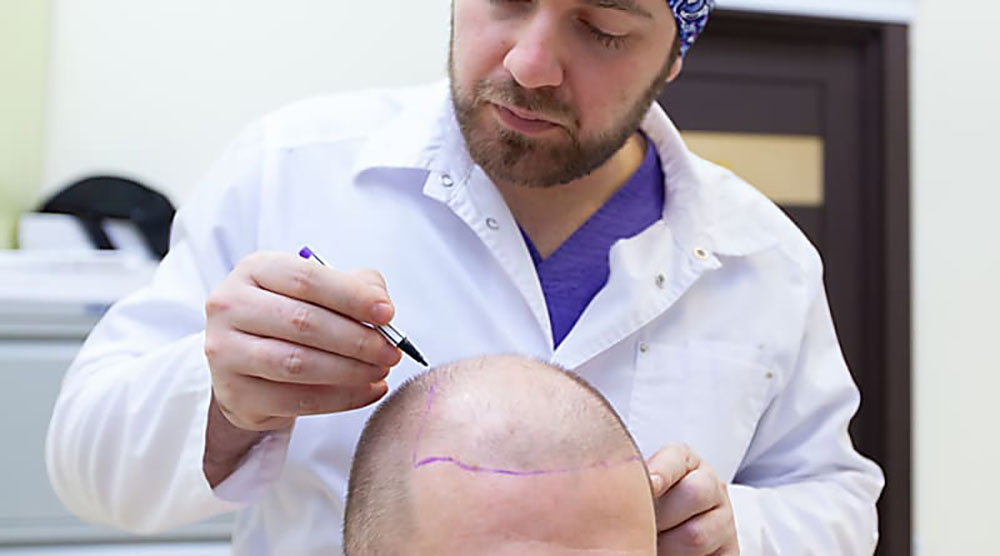Hair Transplants: Modern Options to Restore Your Hair
Hair loss can undermine confidence, but modern hair transplantation offers long-lasting, natural-looking solutions. Learn how contemporary techniques like FUE and FUT work, timelines for visible results, eyebrow restoration options, expected costs, and how to choose a qualified specialist. Read on to decide if a transplant is right for you.

Why consider a hair transplant?
Hair transplant surgery can deliver a durable, natural-looking answer for people coping with thinning or balding. Beyond the cosmetic improvement of a fuller hairline or thicker crown, many patients report a notable boost in self-esteem and day-to-day confidence. Unlike temporary measures such as wigs, sprays, or extensions, transplanted follicles grow like your original hair and require normal hair care. Developments in surgical technique have reduced invasiveness, shortened recovery periods, and minimized visible scarring compared with older methods, making transplantation a viable option for a broader range of candidates.
What does the restoration timeline look like?
Hair restoration is a staged process that begins with consultation and planning and continues through surgical implantation and months of hair maturation. The operation itself usually lasts between 4 and 8 hours, depending on the number of grafts and the chosen method. Initial healing may take a few days to a couple of weeks, but visible hair growth follows a slower pattern: most patients notice new strands appearing around three to four months after surgery. Expect progressive improvement over the following months, with the final cosmetic outcome generally apparent between 12 and 18 months. This gradual growth produces a natural blend with existing hair and allows the surgeon to create a realistic result.
Can transplantation restore eyebrows?
Yes. Eyebrow transplantation has become a well-established technique for people with thin or patchy brows due to overplucking, scars, medical conditions, or genetics. The principles mirror those used in scalp restoration, but eyebrow work demands greater precision and an artistic eye. Surgeons pick fine donor hairs—often from the nape of the neck or behind the ears—to better match eyebrow texture and angle. Grafts are implanted to follow the native growth direction, producing defined, natural-looking brows that complement facial features.
Modern techniques: FUE and FUT
Two widely used methods are Follicular Unit Extraction (FUE) and Follicular Unit Transplantation (FUT). FUE involves harvesting individual follicular units directly from the donor area, leaving tiny punctate marks that heal quickly. FUT removes a strip of scalp from the donor site, which is then dissected into grafts; this method can yield a larger number of grafts in a single session but leaves a linear scar that may be concealed by surrounding hair.
Each technique has advantages and trade-offs. FUE tends to produce minimal visible scarring and a faster recovery, while FUT can be more efficient for extensive transplant needs. The best choice depends on your pattern of hair loss, donor availability, lifestyle, and surgeon recommendation.
| Procedure Type | Average Cost Range | Factors Affecting Cost |
|---|---|---|
| FUE (Follicular Unit Extraction) | $4,000 - $15,000 | Number of grafts, surgeon experience, clinic location |
| FUT (Follicular Unit Transplantation) | $4,000 - $10,000 | Size of donor strip, complexity of case, technician skill |
| Eyebrow Transplant | $3,000 - $8,000 | Number of hairs required, precision needed, technique used |
Prices, rates, or cost estimates mentioned in this article are based on the latest available information but may change over time. Independent research is advised before making financial decisions.
How much will it cost you?
Hair transplantation is generally considered elective cosmetic surgery and is not usually covered by health insurance. Costs vary widely based on geographic location, the surgeon’s reputation and skill, the number of grafts needed, and whether you select FUE, FUT, or a specialty procedure like eyebrow restoration. Clinics may price by graft or by procedure package, so ask for a detailed quote that lists what is included—preoperative tests, post-op visits, medications, and any necessary follow-up treatments.
Choosing the right specialist
Selecting an experienced, board-certified hair restoration surgeon is one of the most important decisions you’ll make. Look for practitioners with a focused practice in hair surgery, strong before-and-after portfolios, and transparent patient reviews. Schedule consultations with more than one clinic to compare philosophies, proposed techniques, and realistic outcome expectations. During consultations, ask about the surgeon’s credentials, complication rates, graft survival estimates, and how they handle revisions if needed. A trustworthy specialist will provide personalized planning, take your aesthetic goals into account, and explain potential risks clearly.
Risks, recovery, and ongoing care
As with any surgical procedure, hair transplants carry risks such as infection, bleeding, scarring, and temporary shock loss of native hair. Choosing a qualified team and following postoperative instructions can reduce complications. Most people return to light activity within a few days and resume normal routines in a week or two, though vigorous exercise should be postponed until your surgeon clears you. Transplanted hair behaves like natural hair, so maintenance includes routine washing, trimming, and styling. Some patients may require medical therapies—like topical minoxidil or oral medications—to preserve surrounding hair.
Final considerations
Hair transplantation can be a life-changing option for people bothered by hair thinning or missing eyebrows. It offers a durable, natural result when performed by an experienced specialist and followed by appropriate aftercare. Before committing, research techniques, review costs, and consult multiple professionals to ensure realistic expectations.
This article is for informational purposes only and should not be considered medical advice. Please consult a qualified healthcare professional for personalized guidance and treatment.






